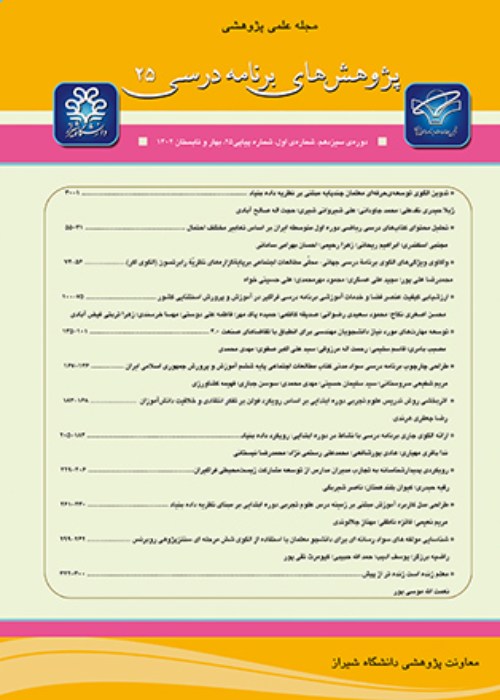An Investigation of the Representation of National Cohesion in Iranian Primary School Textbooks
Today, it is rare to find a country that has not experienced considerable socio-cultural transformation. In this regard, maintaining national unity and cohesion in societies that have cultural, ethnic, linguistic, and religious diversity is far more difficult and complicated than those societies where there is more cultural homogeneity. The political system, policies, and government-driven strategies can promote or undermine national unity. One of the factors that can play a significant role in maintaining solidarity and increasing national belonging among students is the educational system. The aim of the current research was to investigate the representation of national cohesion in Iran’s primary school textbooks. The research paradigm was interpretive, and the research approach was qualitative. The study data was collected through purposeful sampling and included the following textbooks taught in primary schools in Iran: Social Studies, Persian Literature, and Heaven Gifts, which together consisted of 25 volumes. Open and axial coding techniques were used for data analysis. The research findings included 533 concepts, 77 subcategories, and 87 primary categories. After the classification of categories, 11 main themes were identified in the content of textbooks. These themes were common land, cultural heritage, religion, literature and art, flag and anthem, transnational culture, Persian language, civilization heritage, common history, religious holidays, and national heroes and notables. National cohesion and identity have been among the most important topics for all countries in the world. Preservation of national territorial integrity and socialization of students depend on how national identity and cohesion are represented in the educational system of a given country. In this regard, the educational system, as a means to transmit cultural, religious, national, social, political, gender, and ethnic values, can play a pivotal role. The results showed that the promotion of national cohesion in Iranian primary school textbooks suffered from some weaknesses. First, the teaching of national identity and cohesion did not follow logical principles. Furthermore, in some cases, some components of the above-mentioned themes were repeated blandly. Thirdly, the space dedicated to these themes in textbooks was hardly enough. Categories such as religious values and traditional gender roles were among the more prominent categories. Also, of the three dimensions of Iranian national identity, namely, Iranianness, Islamism, universality or modernity, only the dimension of Islamism was taken into consideration and the other two dimensions were neglected. Another problem related to the representation of national cohesion in textbooks was that specialized sources were not consulted. There was an imbalance in the use of national cohesion components in textbooks, and some components were emphasized more than others. The results highlight the significant role that textbook developers, curriculum planners, and educational policymakers can play in the representation of national cohesion. First of all, it is necessary to assess educational needs and collect feedback annually from teachers teaching in different regions regarding the quality of curriculum in terms of content quality, students’ needs, the needs of society, and the current cultural and social exigencies. One of the main and most important responsibilities of curriculum planners and textbook developers is to ensure that all ideas are given fair and enough space in textbooks and that ethnic minorities and their concerns are not marginalized. In this regard, experts in the field should be involved in the process of designing and developing textbooks. As regards the representation of national unity in textbooks, it will be counterproductive to be selective and include only a few elements that have the least impact on maintaining national unity. It is necessary to redefine the category of national cohesion and try to avoid idealism in content development. Students deserve to be provided with a comprehensive description of national identity. For example, regarding the motherland as one of the components of national unity, the contribution of ethnic groups to maintaining the territorial integrity of Iran should be clearly and fairly reflected in textbooks. Generalizations should be avoided, and efforts should be made to reduce the gap between Iranian ethnic groups, which is another main responsibility of curriculum planners. Finally, the way the realities of the society are reflected in upstream documents is idealistic. Thus, it is suggested that those involved in preparing and developing upstream documents have a more realistic view of society and a more open-minded perspective on cultural, social, and educational issues. The discourse governing the textbooks of primary schools in Iran is a mere religious discourse. In other words, it can be said that these textbooks are more concerned with religious rather than national cohesion. Therefore, it is necessary for educational policymakers to reevaluate the discourse governing textbooks. A constructive starting move can be to give more space and voice to ethnic and cultural components, which, in turn, can promote convergence and empathy among different ethnic, cultural, and social groups in Iran.
- حق عضویت دریافتی صرف حمایت از نشریات عضو و نگهداری، تکمیل و توسعه مگیران میشود.
- پرداخت حق اشتراک و دانلود مقالات اجازه بازنشر آن در سایر رسانههای چاپی و دیجیتال را به کاربر نمیدهد.



